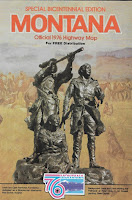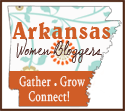 Signing Their Lives Away
by Denise Kiernan and Josephy D'Agnese
My rating: 5 of 5 stars
Signing Their Lives Away
by Denise Kiernan and Josephy D'Agnese
My rating: 5 of 5 stars
I loved this book. It is written in a style that made the signers of The Declaration of Independence become human. It gives a glimpse into the personal lives of each signer as well as what part they each played in the quest for independence from England. It is not a book that you can read cover to cover. It is not a page turner. I decided to read it in small bites reading just a couple of entries each day. It was the non-fiction read for our book club this year. We each took a minor signer and reported on him at our meeting. I chose Lewis Morris*, New York. However, as I read I found some fun tidbits about the different signers.
(See my 'Notes' below)
The authors chose a loose writing style that makes this an easy and enjoyable read. They also included The Declaration and a time line of events leading up to the signing and a Time Line from the beginning of the process until George Washington was inaugurated. There is also a Miscellany of independence; such as, who and how many signed which documents.
Highly recommend! It will answer some questions and motivate you, is so inclined, to make a deeper study of the beginning of our Republic.
Notes:
Massachusetts
John Adams: Signed the Alien and Sedition Act, which as the U.S.
government's first attempt to hassle immigrants and political opponents. (After
deterioration in Franco-American relations.) Page 29
Eldridge Gerry: Ninth Governor. Once in office he backed a
plan to creatively redraw the state senate voting districts to favor his party.
"Gerrymandering" Page 36
Connecticut
Samuel Huntington: The first President of the United States.
1781-title changed from 'President of the Continental Congress" to
"President of the United
States in Congress Assembled". Nine
other men served in that role. That would make George Washington the 11th
President. Pages 55 and 56
Roger Sherman:
Contributed what is called the 'Great Compromise". When
the smaller states were worried that a population-determined form of
representation would leave them little voice, he suggested a dual legislative
system: the lower house, The House of Representatives, would be determined by
proportion of population, and the upper house, the Senate, would consist of two
seats in each state. Page 59
New
York
Francis Lewis: Shortly after the signing of the Declaration
of Independence on August 2, 1776, a British battleship fired on his home. One
soldier ripped the gold buckles off his wife's shoes only to find out they were
fake. She snapped back "All the glitters is not gold". His house was
destroyed and his 60 year old wife was dragged off and put in a New York prison. She was
denied a bed, change of clothing, and decent food for weeks. Finally, a slave
tracked her down and slipped her food and clothing. She was swapped for two
women, wives of prominent Philadelphia Tories. She was still under house arrest
and couldn't leave New York City.
She died at age 64 about two years after her release. Page 77
*Lewis Morris was one of four representatives from New York. New York was the only colony to abstain from signing the first draft on July 2. They were not receiving any direction from their colony and were not willing to decide one way or the other. Lewis Morris helped lead his delegation to approve the Declaration of Independence making the Declaration unanimous. Page 80
New
Jersey
Francis Hopkinson: In March 1780, he took job as Treasurer
of Loans in the Treasury Department. He was on one of the committees tasked
with designing the Great Seal of the United States. He cranked out
pencil sketches of the seals for the Treasury, designs for U.S. Currency, a
naval flag and even a United
State flag. He presented
a bill for his services and it was declined because it was a part of his job.
It wasn't until he died that he got credit for designed the U.S. flag. The
plaque on his grave reads, "Designer of the American Flag". Pages 91
and 92
Pennsylvania
James Wilson: When Parliament closed the port of Boston,
he argued that because colonists didn't have a say in Parliament, this
resolution was absolutely unconstitutional. He was ahead of his time. By
presuming to judge whether a piece of legislation was correct, Wilson implied that judges could, and should,
second-guess legislators. This concept of 'judicial review" would later
become a central tenet of the U.S. Constitution. Page 113
Robert Morris: He was a natural born fund raiser. He went on
to be a superintendent of finance under the Articles of Confederation and later
played a instrumental role in establishing both the Pennsylvania Bank and the
Bank of North America, the country's first government-incorporated bank, which
helped collect funds for the ongoing war effort.
Page 119
George Ross: (He was the uncle to John Rose, husband of
Betsy.) He died of a severe gout attack in 1779, reportedly remarking on his
deathbed that he was about to take a "long journey to a cool place where
there would be most excellent wines". Page 126
Benjamin Rush: He had a knack for describing a scene as
evidenced by this account of the experience of waiting to sign the Declaration
in a letter to John Adams: "Do you recollect the pensive and awful silence
which pervaded the house when we were called up one after another, to the table
of the President of Congress to subscribe what was believed by many at that
time to be our own death warrants?" Page 128
Maryland
Charles Carroll: He ended his very long life in the same
manner in which it had begun-as perhaps the richest man in America. He was the child of a
wealthy tobacco planters. He was Catholic and was sent to France for his
education. He danced, he fenced, he spoke French, and he had 10,000 acres all
his own-he really was quite a catch. He married his cousin, Mary Darnall and
had seven children. Page 151
Samuel 'Old Bacon Face' Chase: He had an abrasive
personality and always managed to say something that rubbed people the wrong
way. He had a gift for oratory that allowed him to crush an opponent with just
the right turn of phrase. He was
unafraid to speak his mind even when he was picking on the most powerful people
in the land. (This was where the 'Bacon Face' name originated, thanks to his
reddish-brown complexion.) Pages 155 and 156
Virginia
Richard Henry Lee: His most notable act was the one that got
the nutty ball of independence rolling: He put forth in Congress the legendary
resolution for separation from Great Britain,
which led to the creation of the Declaration of Independence. Page 180
North
Carolina
Joseph Hewes: John Adams wrote about Hewes and his role in
turning the tide toward independence on several occasions: "Mr. Hewes, who
had hitherto constantly voted against it, started upright, and lifting up both
hands to Heaven...cried out, 'It is done! and I will abide by it.'" Adams later said, "The unanimity of the States
finally depended upon the vote of Joseph Hewes, and was finally determined by
him." Page 197
South
Carolina
Arthur Middleton: Part of the 'fancy foursome' (as the
authors called them) from South
Carolina*. He notably refused to serve on the committee of accounts
because he said he didn't understand them and didn't like business. John Adams
on Middleton-"He had little information and less argument: in rudeness and
sarcasm his forte lay, and he played off his artillery without reserve."
Page 210
*Thomas Lynch, Edward Rutledge, and Thomas Heyward, Jr.
Edward Rutledge: He was an active speaker and effectual
speaker in Congress and one of the leading voices responsible for postponing
until July the vote on Lee's June 7 resolution for independence. In a sense, we
have him to thank for our ability to celebrate independence during a time of
year that's perfect for baseball, hot dogs, apple pies, and ice cream.
He is often credited with playing a pivotal role in
getting the anti-slavery language removed. So the slavery debate was left, in
part at least, for another day and another war, one in which South Carolina
would again assume great importance.
 One Thousand White Women: The Journals of May Dodd
One Thousand White Women: The Journals of May Dodd 





























































